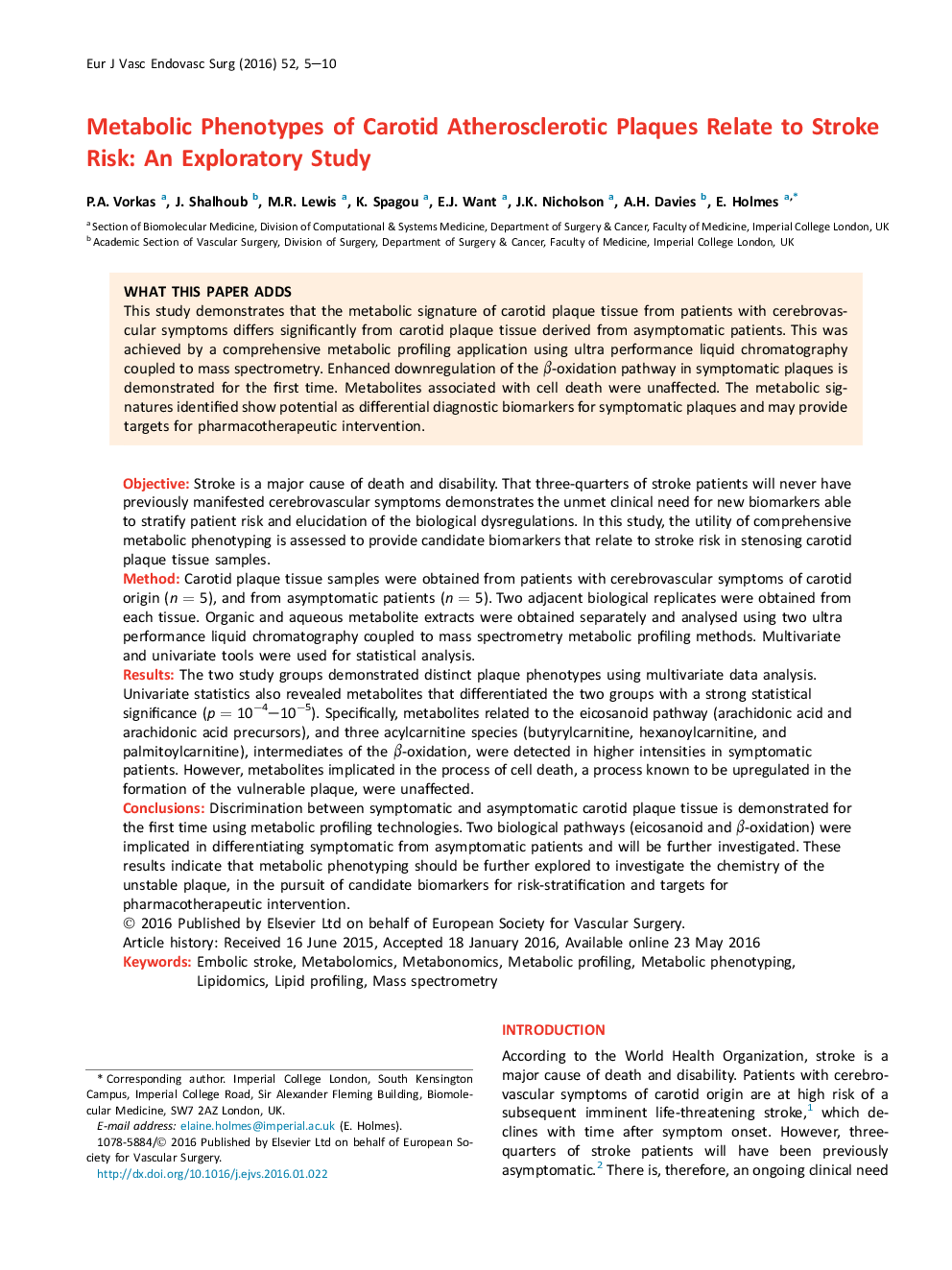| Article ID | Journal | Published Year | Pages | File Type |
|---|---|---|---|---|
| 2911632 | European Journal of Vascular and Endovascular Surgery | 2016 | 6 Pages |
ObjectiveStroke is a major cause of death and disability. That three-quarters of stroke patients will never have previously manifested cerebrovascular symptoms demonstrates the unmet clinical need for new biomarkers able to stratify patient risk and elucidation of the biological dysregulations. In this study, the utility of comprehensive metabolic phenotyping is assessed to provide candidate biomarkers that relate to stroke risk in stenosing carotid plaque tissue samples.MethodCarotid plaque tissue samples were obtained from patients with cerebrovascular symptoms of carotid origin (n = 5), and from asymptomatic patients (n = 5). Two adjacent biological replicates were obtained from each tissue. Organic and aqueous metabolite extracts were obtained separately and analysed using two ultra performance liquid chromatography coupled to mass spectrometry metabolic profiling methods. Multivariate and univariate tools were used for statistical analysis.ResultsThe two study groups demonstrated distinct plaque phenotypes using multivariate data analysis. Univariate statistics also revealed metabolites that differentiated the two groups with a strong statistical significance (p = 10−4–10−5). Specifically, metabolites related to the eicosanoid pathway (arachidonic acid and arachidonic acid precursors), and three acylcarnitine species (butyrylcarnitine, hexanoylcarnitine, and palmitoylcarnitine), intermediates of the β-oxidation, were detected in higher intensities in symptomatic patients. However, metabolites implicated in the process of cell death, a process known to be upregulated in the formation of the vulnerable plaque, were unaffected.ConclusionsDiscrimination between symptomatic and asymptomatic carotid plaque tissue is demonstrated for the first time using metabolic profiling technologies. Two biological pathways (eicosanoid and β-oxidation) were implicated in differentiating symptomatic from asymptomatic patients and will be further investigated. These results indicate that metabolic phenotyping should be further explored to investigate the chemistry of the unstable plaque, in the pursuit of candidate biomarkers for risk-stratification and targets for pharmacotherapeutic intervention.
